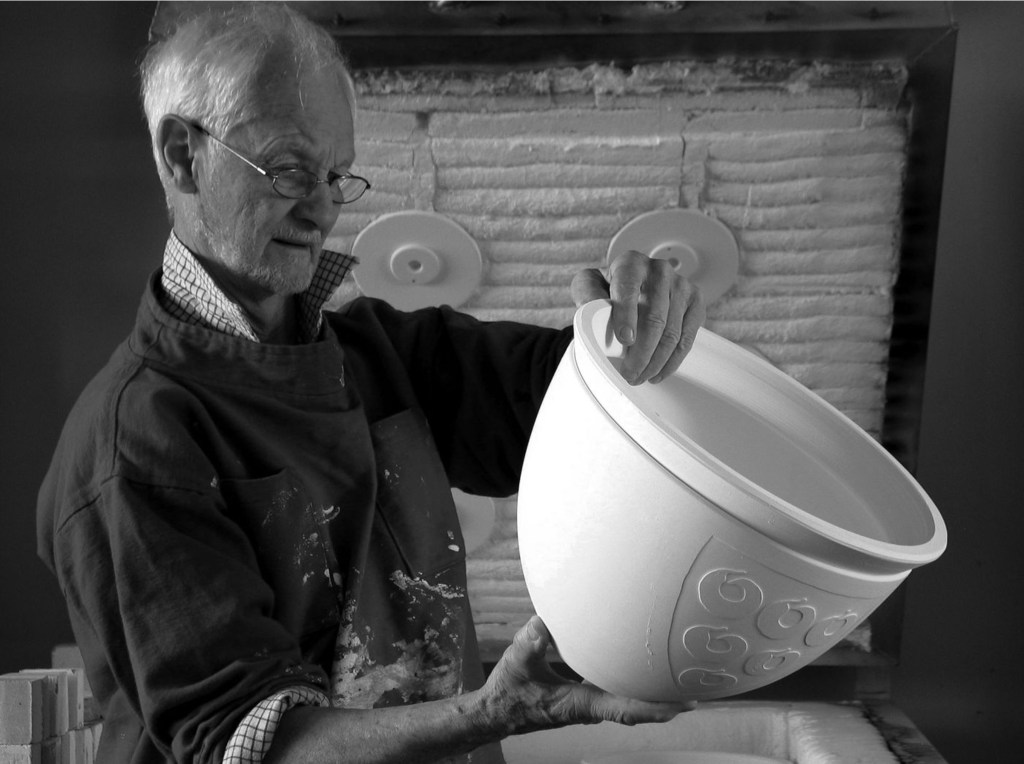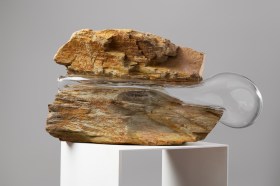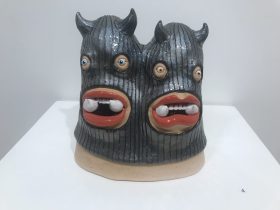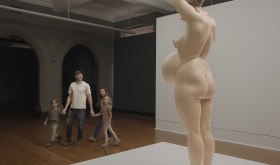Over a career spanning six decades, ‘Les Blakebrough became one of Australia’s most acclaimed and influential ceramic artists.’ It is a line that you will find in any biography written about Blakebrough – a practitioner who transcended making to also garner a reputation for mentorship and craft advocacy.
While Blakebrough’s early work from the 1960s followed the strong, earthy, functional stoneware path of the day, it moved on to a refined pursuit of materiality, and a connection with nature in an almost ethereal sense. What connected both was a fierce drive for experimentation.
The creation of the translucent Southern Ice Porcelain brought his work to international prominence in the 1990s. He spent more than five years developing the porcelain, including research periods at major porcelain factories in Scandinavia and the UK.
Today, it is marketed to ceramicists worldwide and in 2001 the University of Tasmania formed the company Southern Ice Porcelain Pty Ltd to manufacture and market Blakebrough’s products.
In Episode 6 of the podcast Object (2021) Blakebrough explained to Australian Design Centre Director, Lisa Cahill: ‘I wanted a clay you could knead – to be possible to prepare for throwing… And I wanted it very white. I wanted it to be whiter than anything else.’
He added: ‘I wanted to give it a name that located it in the part of the world where we created it.’
It was fitting, then, that Blakebrough used Southern Ice Porcelain to make Tasmania’s wedding gift to Mary Donaldson and Crown Prince Frederik of Denmark.
For any artist who experiences milestone moments of fame, the question of how you navigate that within your ongoing practice can be a hard one.
On the occasion of his 2020 exhibition, Moving forward, Looking back with Sabbia Gallery, Blakebrough reflected: ‘For two decades or more my work has been moving forward along a line that was set in motion with the invention of Southern Ice Porcelain. The creation of this medium was hard won, and it profoundly affected my work. A desire to explore its capacities has sustained my practice ever since, and it remains undiminished.’
While it’s easy to focus on Southern Ice, Blakebrough’s drive for experimentation started from the first day he was introduced to clay at the National Art School, then East Sydney Technical College. His desires to be a painter were quickly derailed. ‘One of the attractive things about ceramics was you started to use your hands. And you could manipulate that material, and do things with it. And there was a kind of chemistry that was involved, that Col Levy introduced me to,’ Blakebrough said of the long relationship he held with his fellow potter, which started at the college.
Another continual line running through Blakebrough’s work is nature, and in particular the image of kelp, used as a kind of deep-etching device to achieve maximum translucency.
‘The local environment seems to be central to almost everything he does,’ said craft curator, writer and historian Grace Cochrane AM. ‘Those thematic things across all of this time are still evident in his work and that’s what I find really impressive.’
Mentor and advocate
Equal to his reputation as a technician and a maker, Blakebrough also influenced a generation or two as a teacher, mentor and craft advocate. He was a founding member of the now defunct Crafts Board of the Australia Council.
Blakebrough explained, ‘[There was] a time when I realised that the horizon needed to open up.’ While a lot of the work he did on the Board was about ‘funding people to extend their work’, he also worked on setting up the Crafts Associates of Australia, which connected associations around the country in a loose arrangement – a foundation of which remains today.
On social media this week, Brian Parkes, CEO of Adelaide’s JamFactory (one of the aforementioned associations), said: ‘He was a pioneer of ceramics practice, ceramics education and ceramics research. He was a bit of a scallywag, an impeccable gentleman and a connoisseur of fine things.
‘He was dedicated to his craft… he made a wonderfully positive contribution to the world. His warm laughter and penetrating gaze will be missed by many.’
Parkes curated the Australian Design Centre’s first Living Treasure: Master of Australian Craft exhibition. It toured nationally until 2007.
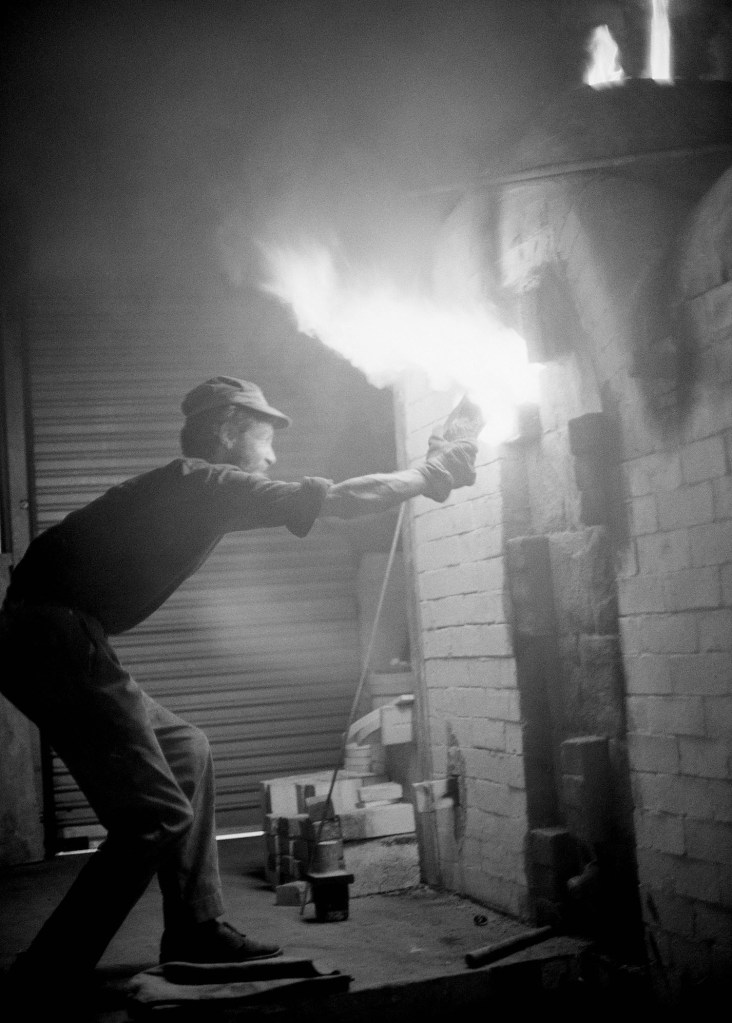
More recently, Blakebrough was honoured by Sturt Gallery and Workshops. Kristie Phelan, CEO of Sturt, told ArtsHub: ‘Les’ immense legacy was warmly celebrated here at Sturt in October last year when we hosted the release of his memoirs as part of Sturt’s 80th anniversary and he was looking forward to our next celebration together for Sturt Pottery’s 70th anniversary in May. He will be dearly missed then, and we will remember him for many, many decades to come.’
Speaking of that student-teacher-mentor relationship, Ben Richardson (Ridgeline Pottery, Tasmania) co-researcher on Southern Ice Porcelain with Blakebrough, said: ‘I was lucky to be around someone who had the commitment, but really, a good eye, [who could] really look at their work, and assess whether it’s working, whether it’s not, what could be changed; what could be better.’
Richardson noted the palpable impact upon those being trained made by practitioners like Blakebrough, who was workshop-trained himself, but when heading up programs in a ‘more experimental or exploratory environment’, also considered ‘the nurturing of a personal voice and a commitment to practice’.
Who was Les Blakebrough?
Born in England in 1930, Blakebrough came to Australia in 1948 at the age of 18.
He trained at East Sydney Technical College (National Art School in Darlinghurst) at a time when particularly notable teachers led the department, studying under Peter Rushforth (1920–2015) – who was largely responsible for introducing ancient Japanese ceramic traditions to Australia – and Mollie Douglas (1920–2011), who was a founding member of the Potters’ Society of New South Wales.
Then in 1957 he took on an apprenticeship at Sturt Pottery in Mittagong (Southern Highlands, NSW) under the pioneering potter, Ivan McMeekin. Before Blakebrough, McMeekin’s first student-assistant was Gwyn John (later Hanssen Pigott).
Blakebrough became Pottery Manager for Sturt in 1959, under which time he initiated a number of visits by international potters, among them John Chappell and Fred Olsen, which resulted in Blakebrough spending a year in Japan in 1963.
That followed with the first Japanese visitors coming to Sturt – Takeichi Kawai in 1964 and Shigeo Shiga in 1966-67. In 1964, following his own experience in Kyoto, Blakebrough returned to take up the position of Director of the Sturt Workshops (1964–1972), and under the guidance of Kawai immediately oversaw construction of a three-chamber climbing kiln, believed to be the first built in Australia.
But it was his move to Tasmania in 1973 that marked the next career chapter. There he taught ceramics for many years at the Tasmanian School of Art, eventually becoming Head of Ceramics, and later Principal Research Fellow of the Ceramic Research Unit at the University of Tasmania (established in 1990). His achievements included the development of Southern Ice, as well as other projects such as Flora Tasmanica.
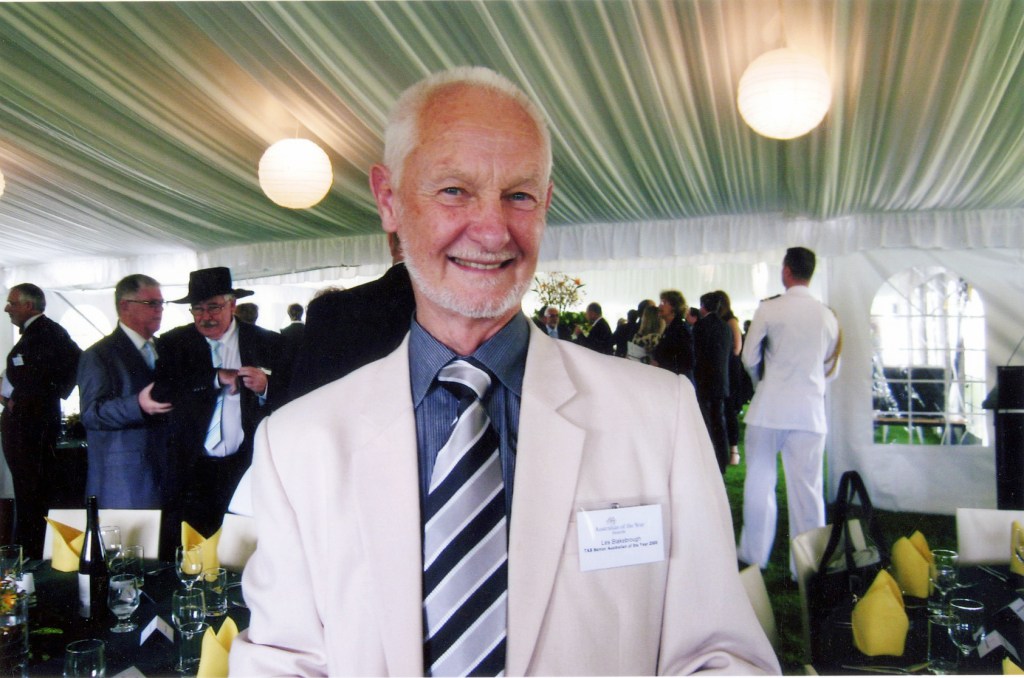
Blakebrough was the recipient of numerous awards across his career, including a gold medal at the International Exhibition of Ceramic Art, Faenza, Italy in 1974, a Churchill Fellowship in 1992, and three Australian Research Council grants during the 1990s.
In 2008 he was awarded Senior Tasmanian of the Year, in 2013 he became a Member of the Order of Australia in the Queen’s Birthday Honours and in 2021 was awarded a fellowship at the National Art School.
His work is represented extensively in galleries in Australia and overseas, including all Australian state galleries, the National Gallery of Australia and the Commonwealth Collection (UK), Imperial Palace Collection, Tokyo (Japan), International Museum of Ceramic Art (Italy), National Museum of Applied Art (Norway) and the Royal Collection of the Queen of Denmark.
A book on his career was published by Watermark Books in 2017, Les Blakebrough – a Memoir.
Blakebrough was living and working at Coledale on the South Coast of NSW at the time of his death (2 December 2022). He was 92.
